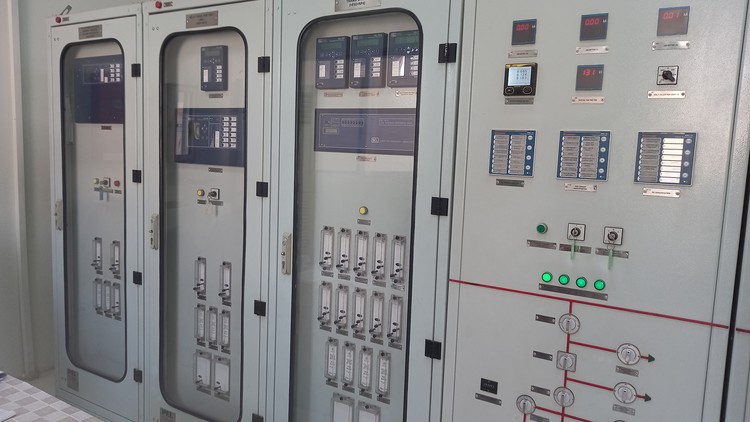Transformer, Panel work

A transformer is an electrical device that transfers electrical energy between two or more circuits through electromagnetic induction. Transformers are used to increase (step up) or decrease (step down) voltage levels between circuits. They are essential in electrical distribution systems for efficient power transmission over long distances.
Components of a Transformer:
Core:
- Made of laminated steel to minimize energy losses.
- Provides a path for the magnetic flux.
Windings:
- Primary Winding: Connected to the input voltage source.
- Secondary Winding: Connected to the output load.
- Windings are made of copper or aluminum and are insulated from each other and the core.
Insulation:
- Insulating materials like oil or gas are used to prevent short circuits between windings and core.
- Solid insulation materials like paper, pressboard, and resin are also used.
Tank:
- Encases the core and windings.
- Filled with insulating oil that helps in cooling and insulation.
Tap Changer:
- Allows adjustment of the transformer’s output voltage.
- Can be manual or automatic.
Bushings:
- Insulated devices that allow electrical connections to pass through the transformer tank without contacting it.
Types of Transformers:
Step-Up Transformer:
- Increases voltage from primary to secondary winding.
- Used in power plants to raise the voltage for transmission.
Step-Down Transformer:
- Decreases voltage from primary to secondary winding.
- Used in distribution networks to lower voltage for consumer use.
Isolation Transformer:
- Provides electrical isolation without changing the voltage level.
- Used for safety and protection in sensitive equipment.
Autotransformer:
- Shares common windings between primary and secondary.
- More efficient and compact but offers less isolation.
Transformer Operation:
- Electromagnetic Induction: Alternating current in the primary winding creates a varying magnetic field in the core, which induces a voltage in the secondary winding.
- Turns Ratio: The ratio of the number of turns in the primary winding to the number of turns in the secondary winding determines the voltage transformation.
Panel Work Description:
Panel work involves the assembly, installation, and maintenance of electrical control panels, which are used to distribute and control electrical power within a building or an industrial facility.
Components of Electrical Panels:
Enclosure:
- Protective casing made of metal or plastic.
- Houses all the internal components and provides protection against environmental factors.
Main Breaker:
- The central switch that controls the power supply to the entire panel.
- Provides overcurrent protection for the panel.
Circuit Breakers:
- Individual switches that control power to specific circuits.
- Protect circuits from overloads and short circuits.
Bus Bars:
- Metal strips that conduct electricity within the panel.
- Distribute power from the main breaker to the individual circuit breakers.
Neutral and Ground Bars:
- Bars for connecting neutral and ground wires from the circuits.
- Ensure proper grounding and safety.
Wiring:
- Conductors that connect various components within the panel.
- Color-coded for easy identification of different circuits.
Control Devices:
- Includes relays, contactors, and timers used in control panels.
- Used for automation and control of electrical systems.
Steps in Panel Work:
Design and Planning:
- Designing the layout of the panel based on electrical requirements.
- Selecting appropriate components and ensuring compliance with codes and standards.
Assembly:
- Mounting components inside the enclosure.
- Connecting wires and bus bars according to the design.
Installation:
- Installing the panel at the designated location.
- Connecting the panel to the power supply and to the circuits it controls.
Testing and Commissioning:
- Conducting tests to ensure all connections are correct and the panel operates as intended.
- Checking for proper insulation, grounding, and overcurrent protection.
Maintenance:
- Regular inspections to ensure the panel remains in good working condition.
- Updating or replacing components as needed to ensure continued safe operation.
